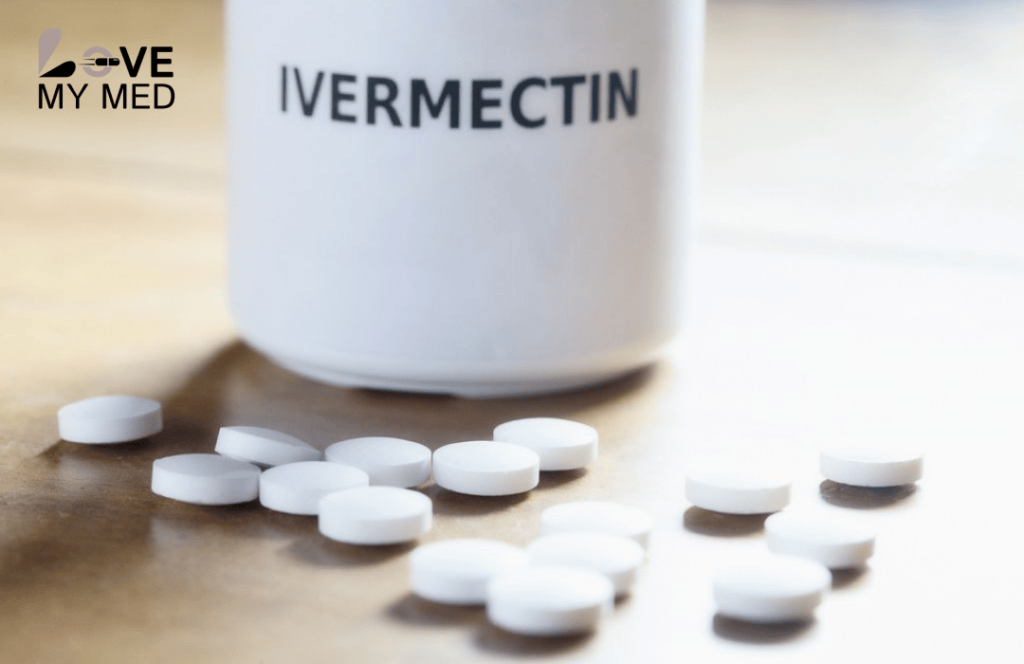How Does Sildenafil Help Pulmonary Hypertension?
Introduction to Pulmonary Hypertension and Sildenafil
Sildenafil has revolutionized the management of erectile dysfunction. It is now also used in managing pulmonary arterial hypertension (PAH), a class of pulmonary hypertension (PH). PH, at its severe stage, is a life-threatening disease that leads to heart failure and other significant health complications.
Key Takeaways: Pulmonary Hypertension (PH)
-
Pulmonary hypertension (PH) is high blood pressure in lung arteries, making the heart work harder and potentially leading to right-sided heart failure.
-
Common symptoms include shortness of breath, chest pain, dizziness, fatigue, and swelling, often worsening over time.
-
Causes include heart disease, chronic lung conditions, blood clots, sleep apnea, and autoimmune disorders, though some cases are idiopathic (unknown).
-
Diagnosis involves echocardiogram, chest imaging, lung function tests, and right heart catheterization, which is the gold standard.
-
Treatment options include vasodilator drugs, oxygen therapy, blood thinners, lifestyle changes, and in severe cases, surgery or transplant.
-
Early detection and treatment improve quality of life and survival, making timely medical evaluation critical.
What Is Pulmonary Hypertension?
This type of PH affects the arteries servicing blood to the lungs and is classified under vascular pulmonary hypertension. PAH is more common in women than men and ranges from mild hypertension to severely jeopardizing blood pressure levels. In either case, it is associated with acute or chronic obstructions in the blood vessels of the lungs.
Patients in the late stages of heart failure have two major symptoms of PH: dyspnea, or shortness of breath, extreme fatigue, lethargy, and swelling of the legs, known as edema. Most patients requiring treatment have already developed severe complications.
Sildenafil’s primary effect is on the blood vessels smooth muscles, where it causes vasodilation, improving blood flow and reducing the workload on the heart. This eases some of the strain associated with PH and helps increase blood flow to the lungs, easing the symptoms.
This also leads to increasing resistance for the heart, causing strain and oxygen-starved tissues on account of muscle fatigue and the inability to continue blood circulation.
It may trigger various signs like these:
- Physically active individuals experiencing breathlessness.
- Feeling fatigued or seemingly low in strength.
- Aching legs or swollen ankles.
- Chest discomfort or heart racing.
If you experience any of these, speak to the appropriate physician who can provide the fitting diagnosis alongside a suitable treatment.
What Is Sildenafil and How Does It Help?
Sildenafil is commonly recommended for PAH since it assists in the dilation of the blood vessels in the lungs. Usually, a substance referred to as phosphodiesterase type 5 regulates the relaxation of blood vessels. Why does sildenafil work? Because it blocks PDE5, it helps raise the levels of cyclic GMP (cGMP) in the blood vessels. Increased cGMP levels relax and widen the blood vessels, resulting in more effortless blood flow.
Simply put, sildenafil reduces lung pressure and allows the heart to pump blood more effortlessly. It also boosts effort tolerance and improves the quality of life in people with pulmonary hypertension.

How Sildenafil Works in Pulmonary Hypertension
The Role of PDE5 in Pulmonary Vasculature
These arteries can be narrowed or blocked in patients with pulmonary hypertension, which increases and complicates the workload of the heart. An increase in blood pressure causes the heart to work harder, which could result in heart failure, among other complications, after some time.
Phosphodiesterase type 5 (PDE5) is a specific enzyme that controls constriction and dilation of blood vessels within the heart and lungs. Its activation can lead to the constriction of blood vessels, resulting in the narrowing of the pathways through which blood can flow. To bypass the constrictions caused by PDE5, Sildenafil was designed. Blocking the PDE5 enzyme will prevent the constriction of blood vessels and instead keep the vessels open and relaxed.
Inhibiting the PDE5 enzyme allows blood to flow more freely to the pulmonary arteries, which relax due to less constriction, reducing the pressure on the heart. This is the main reason PAH patients with increased pulmonary arterial pressure due to hypertension respond well to Sildenafil.
Sildenafil’s Effect on the cGMP Pathway
Sildenafil decreases the levels of an enzyme called phosphodiesterase type 5 and increases levels of cyclic guanosine monophosphate (cGMP). cGMP is important in relaxing blood vessels or calming down smooth muscles in blood vessels. The constriction of blood vessels occurs when there is not sufficient cGMP available.
Sildenafil helps to amplify the cGMP levels, which permits the relaxation and dilation of blood vessels, enhancing the flow of blood while reducing the workload on the heart.
In simple terms, sildenafil enhances the performance of the blood vessels in the lungs and facilitates the flow of blood through them. This reduction in pressure within the lungs helps alleviate the symptoms associated with pulmonary hypertension.
Benefits of Sildenafil in Pulmonary Hypertension Management
Improvement in Exercise Capacity
The Advantages of Using Sildenafil for Managing Pulmonary Hypertension: Improvement of Exercise Performance. Sildenafil aids individuals suffering from pulmonary hypertension in breathing and can significantly improve physical activity. Enhanced blood flow to the lungs decreases the workload on the heart, enabling patients to engage in more physical activities without excessive fatigue or shortness of breath. For many patients who were previously limited by their symptoms, such improvements can make a meaningful difference in their lives.
Delay in Disease Progression
Delay in the Progression of the Disease Sildenafil does not eliminate the disease, but it does help in managing the progression of pulmonary hypertension. By alleviating the pressure on the heart, sildenafil helps patients better manage their condition for longer periods before needing more intense treatments.
Favorable Side Effect Profile
Pulmonary otras la primera vez Sildenafil does not provoke as severe side effects as other lung hypertension medications. Most patients tolerate side effects like headache and dizziness, which are believed to dissipate over time. Svernierel does not have to because more complicated treatments are usually not causing side effects in most people.
Administration and Dosage Guidelines for Sildenafil in Pulmonary Hypertension
Recommended Dosage for Adults
In most patients with pulmonary hypertension, initial treatment with sildenafil starts at 10 mg three times daily. This helps increase blood flow to the lungs and mitigate the pressure within the lung arteries. Depending on the response, physicians may tailor the dose.
Advice in this vitally important matter is not to change or not to follow the recommendations of the physician. This guarantees the effectiveness of the medication as well as safety from undesired effects.
Pediatric and Neonatal Dosing Considerations
Congenital heart defects or prematurity might have pulmonary hypertension.
With regard to children, the treatment must be tailored according to age and weight. As for adults, the dosage is significantly different.
Concerning children, the treatment must be tailored according to age and weight. As for adults, the dosage is significantly different. Parents/guardians must actively take part with physicians in achieving the ideal treatment, monitoring the appropriate dosage and potential reactions, if any, to the dosage.
Side Effects and Safety Precautions
Common Side Effects
The majority of individuals tolerate sildenafil effectively; however, as with any medication, it may lead to certain side effects. The most common ones include:
- Headaches
- Flushing (a feeling of warmth or redness in the face)
- Dizziness or lightheadedness
- Upset stomach or nausea
These side effects are usually mild and go away on their own as the body adjusts to the medication. If any of these side effects become bothersome or don’t go away, it’s important to talk to a doctor.
Serious Risks and Contraindications
Sildenafil does have serious risks attached to it, but it also tends to be on the safer side. People who are using medications containing nitrates are not bound to use them, as such puts one at risk of facing an uncontrollable drop in blood pressure.
As follows, for the drugs that interact with sildenafil and other medications, do inform your physician regarding all the medications that you are currently taking.
Sildenafil should be used with caution in patients with heart conditions, like advanced heart failure, or prior history of strokes, and only under strict medical supervision. In exceptionally rare instances, sildenafil’s side effects could get more severe, causing sudden loss of vision or hearing. Seek immediate medical assistance if you have chest pains, extreme dizziness, or an erection lasting longer than four hours.
Frequently Asked Questions
1. How long does sildenafil take to work for pulmonary hypertension?
Sildenafil takes effect is usually expected from half an hour to one hour. Most people start noticing changes within a few days or weeks after commencing therapy with the drug. However, it is advisable to allow some time to experience the full benefits, if willing, by adhering to the guidelines provided by the physician.
2. Does sildenafil cure pulmonary hypertension?
While progress may be slower, it does assist in alleviating symptoms that accompany pulmonary hypertension. Eases pressure within the lungs, improves breathing and physical exertion, and slows down the ailment.
3. Is sildenafil safe for older adults with pulmonary hypertension?
Yes, older patients suffering from hypertension can safely use these drugs.
Nevertheless, due to some other health conditions or medications, they may require a lower dose. Similar to any medication, it is crucial to address your concerns and obtain suitable supervision when using sildenafil.
4. Can I drink alcohol while taking sildenafil for pulmonary hypertension?
It is advisable to refrain from consuming alcohol while taking sildenafil. This is because alcohol can lower blood pressure and may worsen side effects like dizziness. Verify the amount of alcohol that is deemed safe while on sildenafil with your doctor.
5. Are there other treatment options besides sildenafil for pulmonary hypertension?
There are also other treatment options for pulmonary hypertension, for example, tadalafil and some other medicines that focus on other parts of the disease. Your physician will determine the appropriate treatment for your health requirements.
Quote:
Content on Lovemymed is derived from credible, authoritative sources. Our Content Information Policy explains how we ensure the integrity of our content.





